A few months ago, we wrote an article announcing Revive MD GI+, a gut health supplement formulated by Dr. Domenic Iacovone and Matt Jansen at Revive MD that brought a few unique ingredients to the table. Most notably, it contained N-acetyl-glucosamine, which we explored for its ability to heal intestinal lining -- as opposed to other forms of glucosamine that work as joint supplements.
Revive MD has done a fantastic job of formulating specific health supplements, introducing us to ingredients that often go forgotten or are simply unknown. Today, they're adding to their gut health supplement stack with a simple, single-ingredient formula we've talked about several times: Revive MD Glutamine.
Glutamine... for Gut Health
We always state that glutamine is not a muscle-building supplement, even though it was originally marketed as one. However, that doesn't mean the highly-abundant amino acid isn't without benefits.
In this article, we dive into glutamine's role as a supporting ingredient to GI+, and look deeper into the mechanisms driving its gut health improvements.
Before we dive in, take a moment to subscribe to PricePlow's Revive MD news alerts, since the brand is always doing something novel!
Revive MD Glutamine – Deals and Price Drop Alerts
Get Price Alerts
No spam, no scams.
Disclosure: PricePlow relies on pricing from stores with which we have a business relationship. We work hard to keep pricing current, but you may find a better offer.
Posts are sponsored in part by the retailers and/or brands listed on this page.
This area is reserved for Team PricePlow's upcoming Ingredients video.
Subscribe to our channel and sign up for notifications so you catch it when it goes live!
"A key building block for protein and muscle development that helps support immune and gastrointestinal health - aiding in digestion and protecting the stomach lining."
-- Revive MD Newsletter
Revive MD Glutamine Label: Note the 10g scoop size!
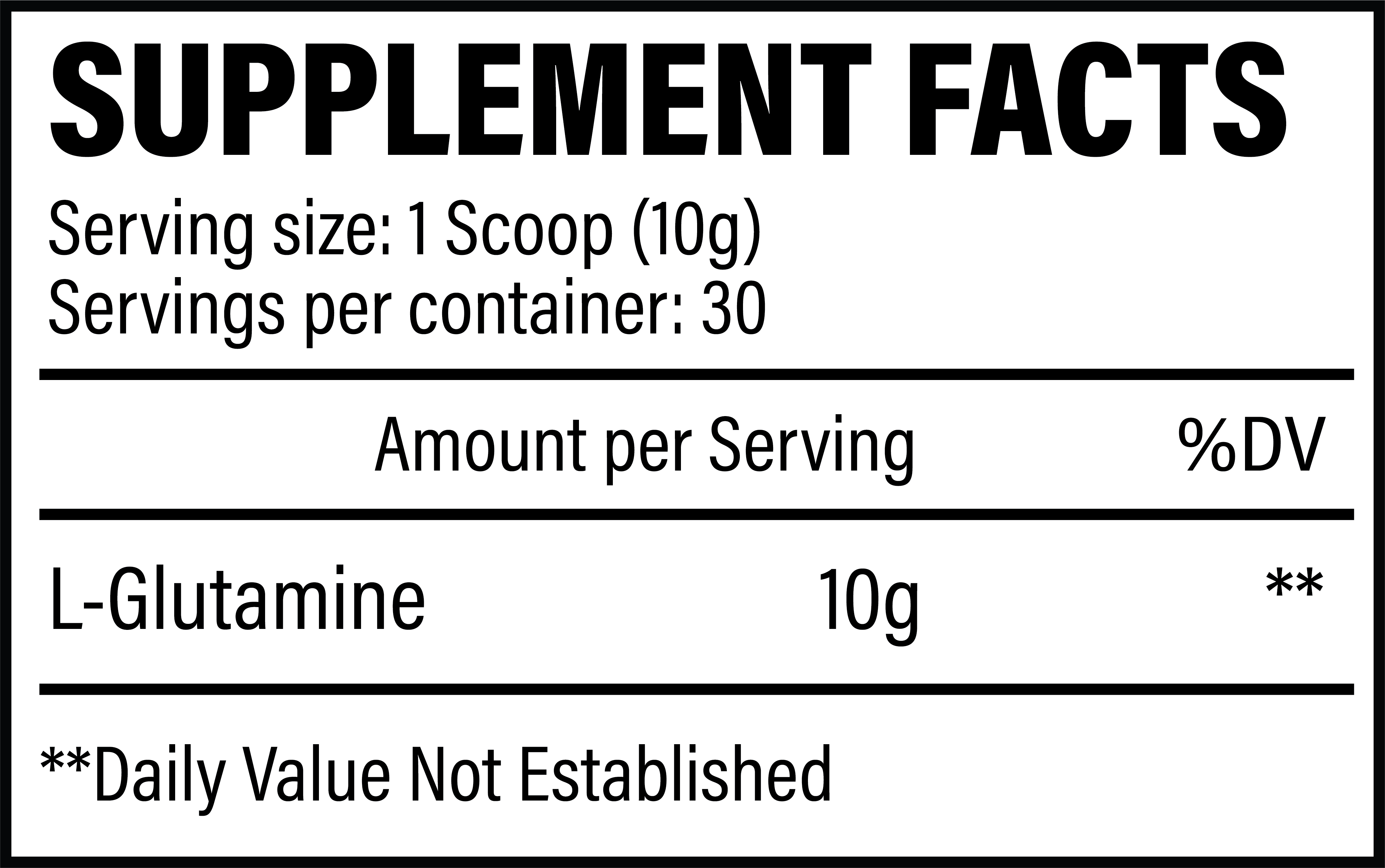
The difference here is that Revive MD is using 10 gram scoops, which is double the norm. Go big for your gut!
This is a 300 gram tub of L-glutamine powder, which is the standard. What's not standard is that Revive MD has put a scooper that's twice the size of most other glutamine supplements. Inside, you're getting 10 grams per serving, which gives us a hint that the brand sees benefits beyond the typical 5 gram dosage. This is especially true for their sponsored athletes, who are generally on the bigger and more athletic end of the spectrum.
Let's see how this may help with gut health:56
Glutamine and Gut Health
Well known for decades, there is a 1996 review article simply titled "Glutamine" whose abstract states, "There is also considerable evidence that glutamine can enhance the barrier function of the gut."[1] Digging deeper into that review, we learn of another study demonstrating that the gut consumes large amounts of the amino acid,[1,2] especially during times of critical illness in animals.[2]
Greater utilization and metabolization during times of stress and trauma
In that 1991 study, seven patients with multisystem trauma were catheterized and analyzed throughout their recovery. While other amino acid levels were unchanged, less glutamine was detected, indicating that more uptake was occurring in the gut. This was also confirmed by elevated levels of citrulline, which occurred due to glutamine's metabolism.[2]
The body is quite flexible and adaptive at using glutamine -- it can be taken either from the small bowel epithelium or straight from the bloodstream.[3] The first pass extraction rate is about 30%, so it's good to have on a regular basis, especially if sick or "traumatized" from your Matt Jansen powered workout.
The gut atrophies without glutamine
It's well-known to researchers that the gut atrophies during long-term parenteral nutrition (when nutrition is provided outside of the digestive tract). However, when adding glutamine to parenteral formulas, much of the gut atrophy can be ameliorated.[4]
A barrier for the gut (and immune health)
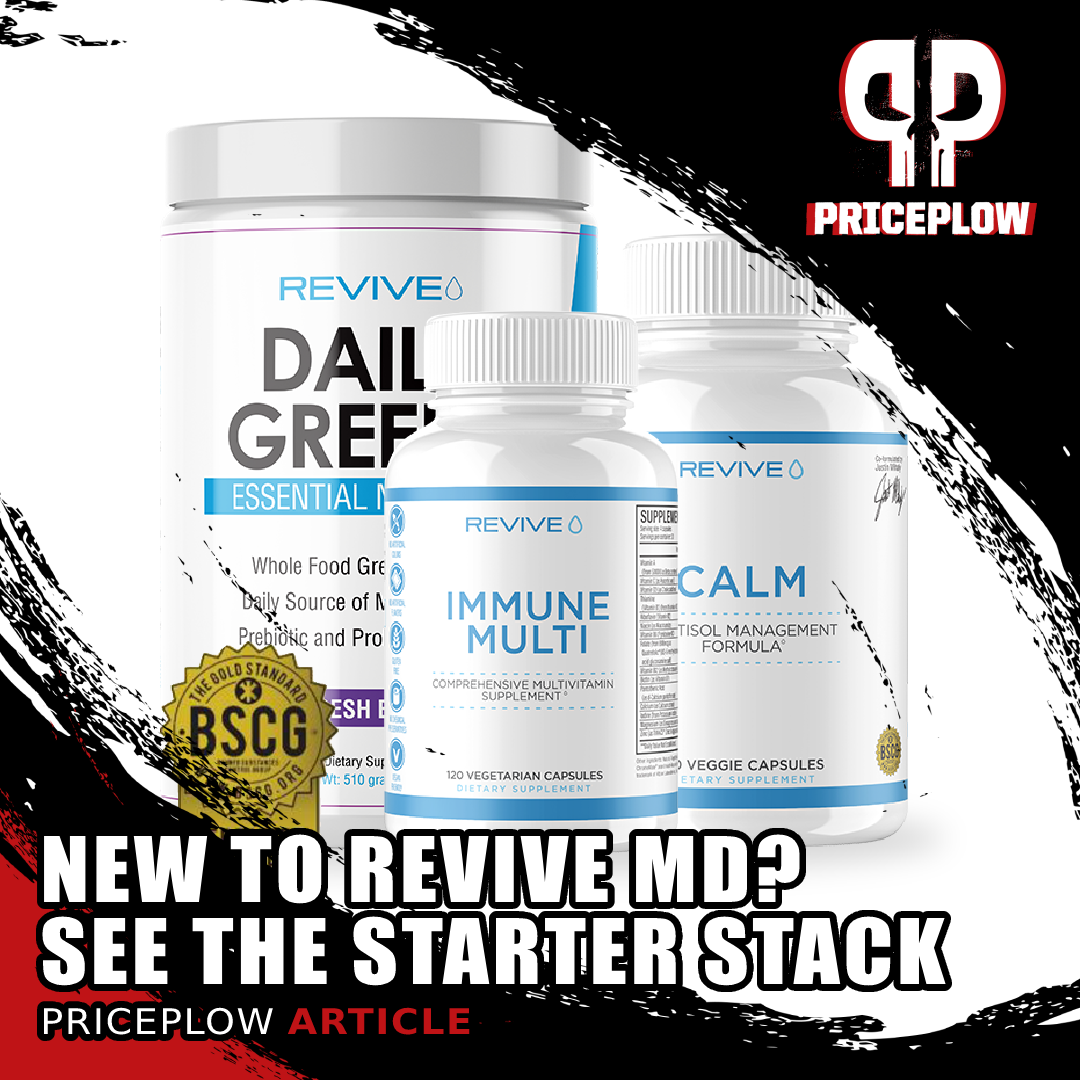
New to the incredible supplements at Revive MD and not sure where to start? They've got it all covered for you in this Revive MD's Starter Stack, which you can also supplement with glutamine!
Beyond its role as an organ for digestion and absorption, our guts are also barriers against pathogens, acting as a major part of the innate immune system. Several studies have demonstrated that glutamine enhances the mucosal barrier in the gut.[5]
A breakdown in this mucosal barrier's function is generically referred to as "Leaky Gut Syndrome", and glutamine is considered the most important nutrient in healing this condition.[6,7] Several studies demonstrate its potency in reducing intestinal permeability from stressors while maintaining normal barrier function.[8-13]
The immune connection
This ties into a lot of the health claims made regarding immunity: if the gut is strengthened and has the amino acids it needs to operate, the immune system stands a stronger chance at defeating invading pathogens. Diets higher in glutamine have been shown to prevent some bacteria from crossing the gut mucosal barrier (known as translocation).[14,15]
This is why it's not surprising to see lower levels of plasma glutamine contribute to decreased immune system function and greater chances of getting sick.[16]
An "Immunonutrient": Fuel for your enterocytes
Glutamine provides a major source of energy for the enterocytes and epithelial cells in the intestines.[17] Enterocytes are intestinal absorptive cells, and epithelial cells relate to the epithelium, which line the outer surfaces of blood vessels, organs, and of course the skin's epidermis. Because of this, researchers call glutamine an immunonutrient, as it enhances immune function, especially in patients with surgical and critical illness.[17]
We close with a 2012 meta-analysis, where researchers concluded that glutamine improves barrier function and morphology, decreases mucosa atrophy, prevents radiation-induced GI injury, reduces oxidative stress, boosts mucosal lymphocyte count, and lowers intestinal permeability and inflammation.[6]
There are other systems that glutamine supports, such as recovery and potential endurance applications, but this article focuses on gut health.
Why did Revive MD launch a glutamine supplement?
From the Revive MD newsletter:
Why did we add Glutamine to the product line?
There are a lot of great benefits from high quality L-Glutamine, especially for individuals and athletes looking for gut and digestive support.
Many products on the market include Glutamine, but if you increase your intake of that multi-ingredient product, then you're also increasing your glutamine intake, which in reality is likely wasting ingredients.
We wanted to create a single ingredient that could be added to any supplement stack to support your individual needs.
-- Revive MD
A supplement too cheap and easy not to try for gut health
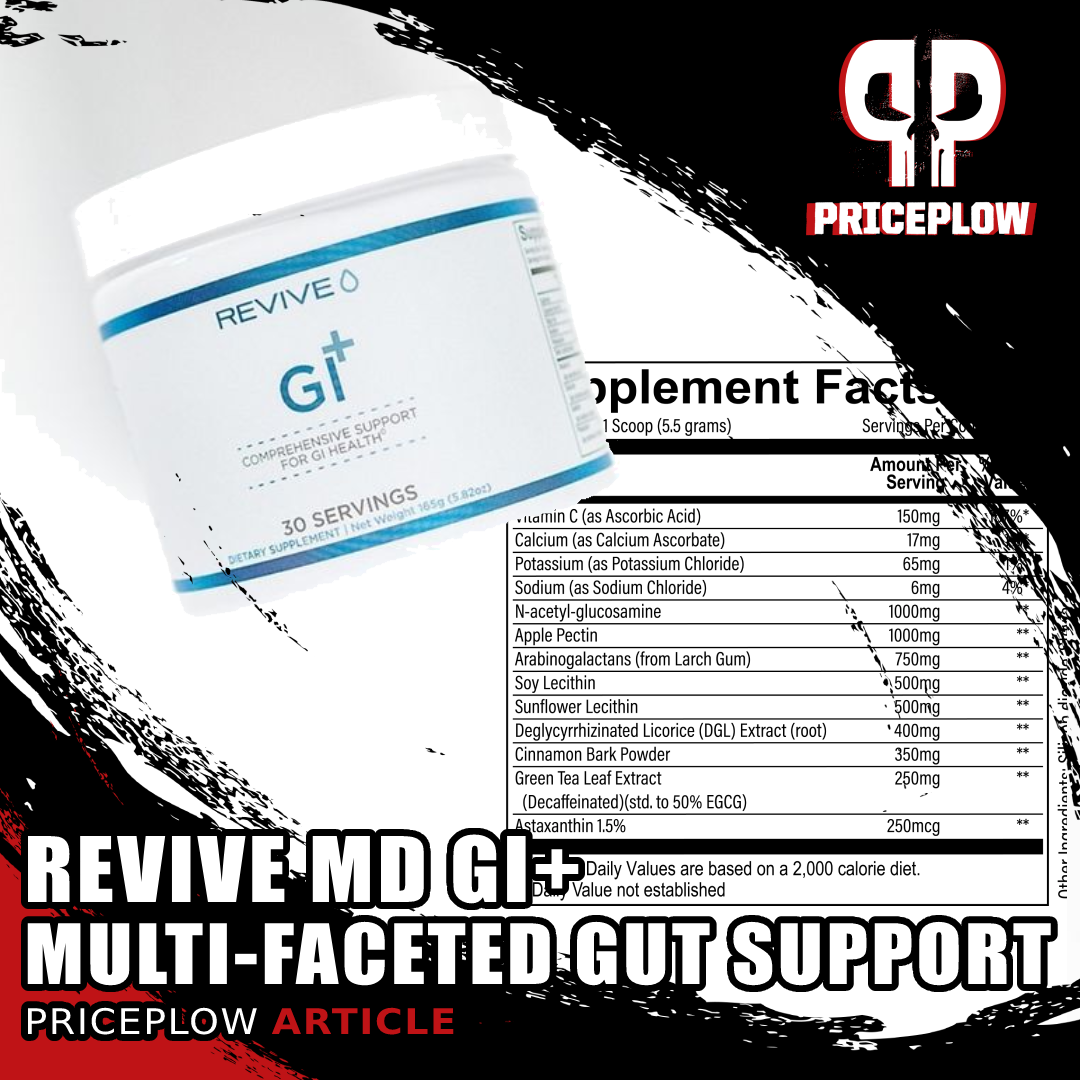
Revive MD, a supplement brand that's no stranger to all-in-one formulas, has put out their comprehensive GI Health supplement, GI+
None of the above is based on new research, but it all seems to have been missed in the decades of false marketing claims regarding glutamine and muscle gains -- which it doesn't really affect.
What it does do is improve gut health, subsequently improving immunity.
Our key takeaway is simple: if your gut health is "jacked up" in any fashion, why not try adding a ten gram dose of glutamine once or twice a day? It's inexpensive and just may be the amino acid your body is looking for, yet having trouble producing in the quantities it needs.
Those are the situations where supplementation are key, and when it comes to gut health, Revive MD GI+ and Glutamine make a powerful combination worth testing.
Revive MD Glutamine – Deals and Price Drop Alerts
Get Price Alerts
No spam, no scams.
Disclosure: PricePlow relies on pricing from stores with which we have a business relationship. We work hard to keep pricing current, but you may find a better offer.
Posts are sponsored in part by the retailers and/or brands listed on this page.

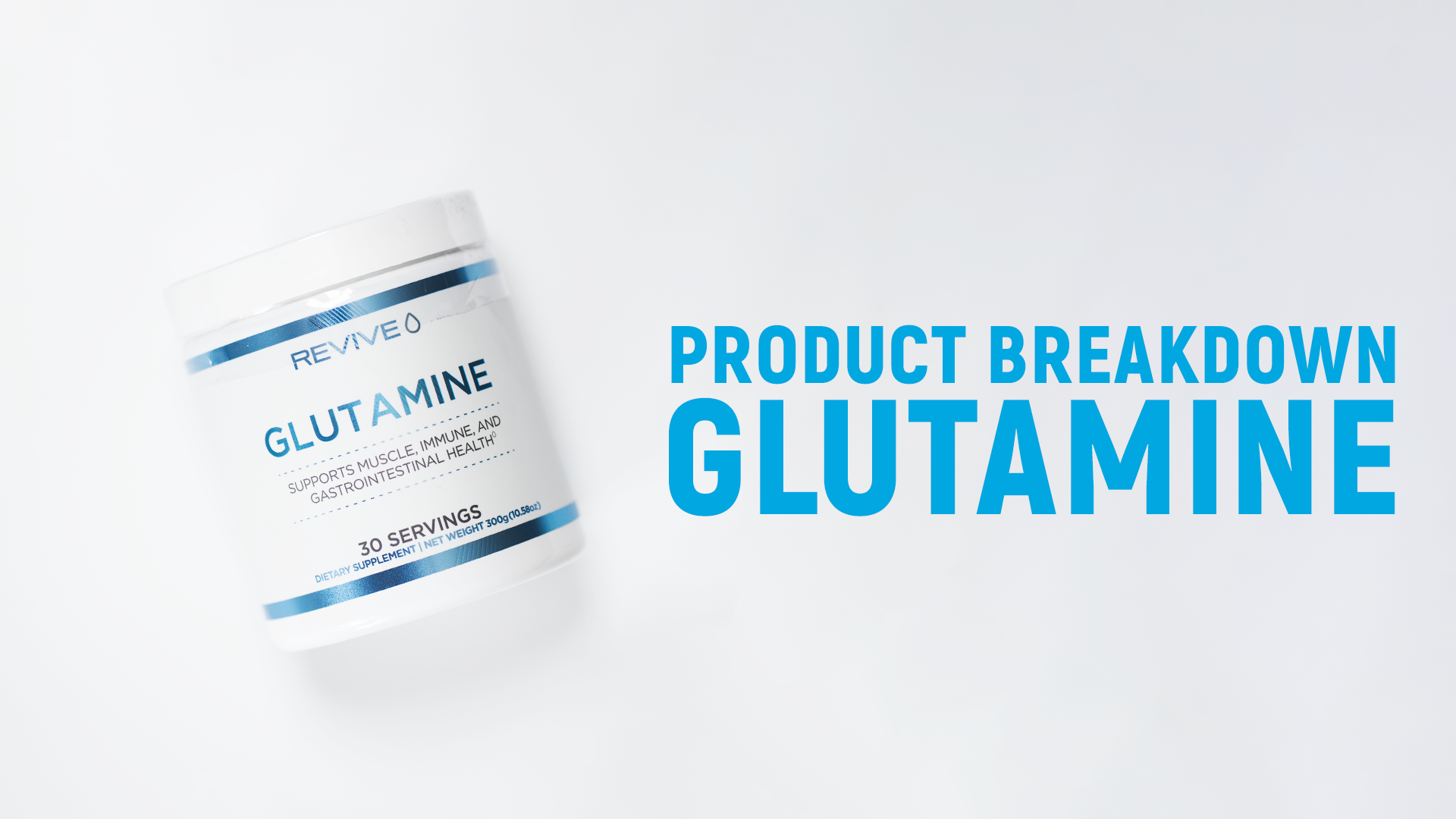
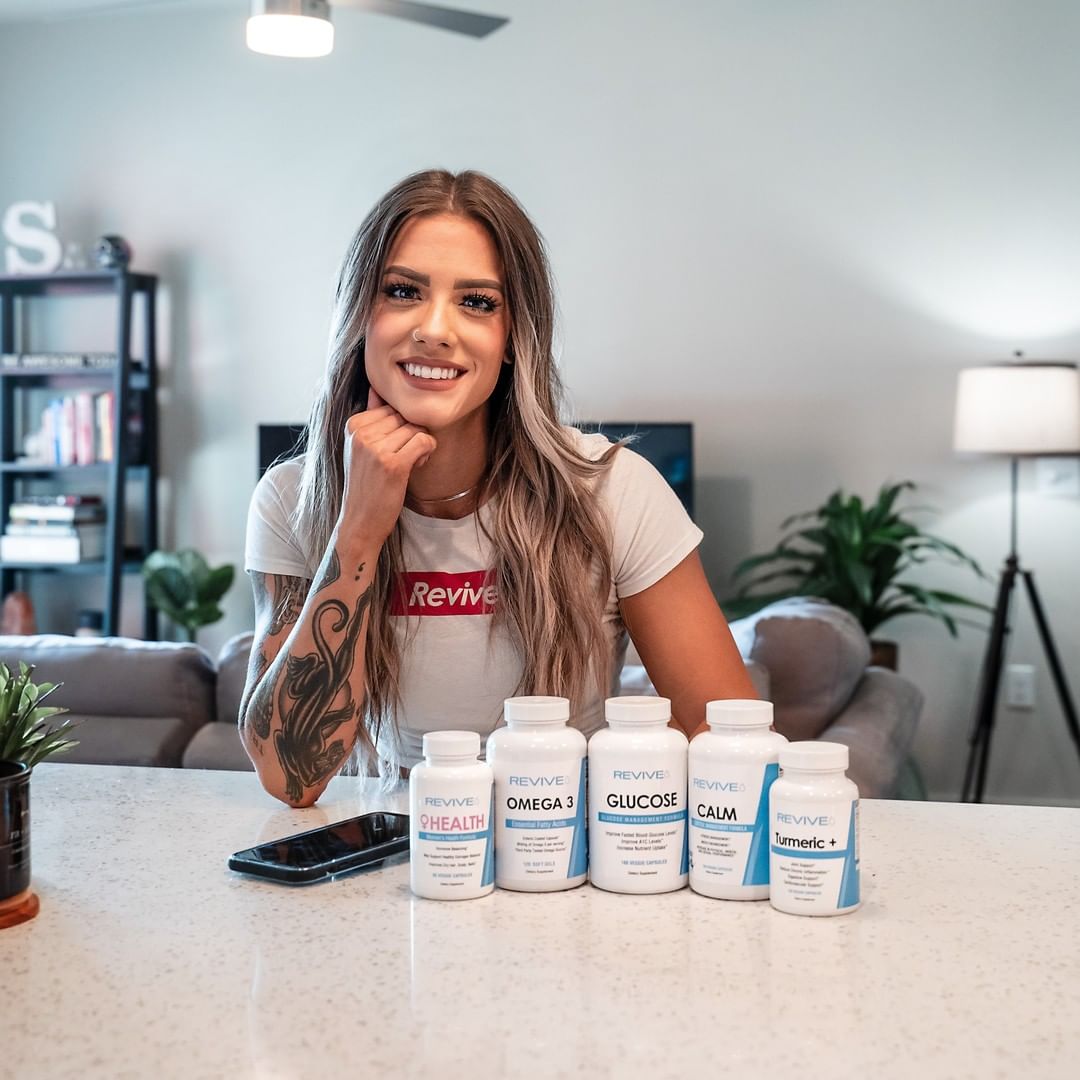


Comments and Discussion (Powered by the PricePlow Forum)